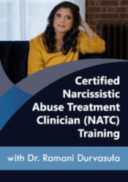Ever since I was a boy, having grown up in a country (the Netherlands) that was liberated from the Nazis by American and Canadian troops after years of bombings, mass incarcerations, starvation, and brutality, I’ve viewed the United States as a beacon of hope and sanity. After I emigrated there—and made it my life’s work to understand how people survive horrendous conditions, and how different countries deal with distribution of power, social opportunities, and the delivery of justice—it became a land of incredible opportunity for me, as it’s been for so many others.
But in spite of its abundance, there exists the painful reality that the United States performs much worse than comparable countries in some of the critical areas that define healthy communities, like life expectancy, medical care, educational achievement, social equality, incarceration rates, and support for young families trying to raise children.
Therefore, I was stunned to receive a notification from the National Science Foundation in March 2025 announcing that under the Trump administration’s new policies, dozens of terms—including disabilities, minorities, social justice, gender inequality, and trauma—had been scrubbed from government websites and documents. Studies examining these issues are no longer eligible for federal support, and grants and programs including these words are withdrawn and no longer funded. This is gravely concerning for many reasons, including the fact that it’s these subjects the U.S. needs to confront if it wants to improve its global standing. Let’s look at each:
Education. The U.S. currently ranks 36th in the world on the list of most educated countries, and it’s steadily losing its educational standing compared to countries like Singapore, China, Finland, South Korea, Taiwan, Japan, Switzerland, Estonia, and Canada. Approaches to education vary greatly around the world, but high-performing countries prioritize public education by ensuring that teachers are well-paid, schools have modern infrastructure, and people have equitable access.
Surely, we won’t make progress by abolishing our Department of Education. Without its macro view of public education, how can we possibly cultivate well-rounded global citizens if terms like culturally appropriate, ethnicity, socioeconomic, identity, inequitable, sense of belonging, and multicultural are scrubbed from our resources as topics of study?
Life expectancy. As of 2021, the United States had a life expectancy of 76.4 years, a marked decline from previous years, positioning it well below 50th place among developed nations. By comparison, life expectancy in countries like Japan and Switzerland exceeds 84 years. Despite spending significantly more on healthcare per capita, the U.S. has higher rates of infant mortality and preventable deaths than these nations, especially when it comes to minority populations. Black mothers are three times likelier to die in childbirth than white mothers—and roughly 80 percent of these deaths are preventable.
Why do White Americans have much higher life expectancies than Black and Indigenous populations? Numerous studies show that groups that have experienced chronic poverty, forced displacement, or systemic racism carry lasting health burdens due to the prolonged activation of stress hormones that increase the risk of heart disease, stroke, immune system dysfunction, and chronic diseases like hypertension and diabetes. Research shows that these stress hormones can even cause epigenetic changes that affect stress response across generations.
General health and life expectancy are also drastically influenced by exposure to traumas like physical, sexual, and psychological assault, as well as environmental adversity. And Adverse Childhood Experiences (ACES) like abuse, neglect, or witnessing violence have been shown to markedly increase the risk of chronic disease, mental health issues, and substance abuse. These are urgent public health issues, and it’s hard to even begin to address them when terms like health disparity, equity, socioeconomic, trauma, Black, and female are excluded from discourse.
Incarceration. The U.S. holds 21 percent of the world’s prisoners, even though it only makes up about four percent of the world’s population. In 2022, the U.S. had more than 1.8 million incarcerated adults in prisons and jails, a rate of 541 inmates per 100,000 people. When factoring in inmates in U.S. territories, military facilities, and U.S. Immigration and Customers Enforcement (ICE) facilities, the number reaches more than 2.4 million inmates. The annual cost of incarceration is more than 81 billion dollars. Meanwhile, in other developed countries like the Netherlands, the incarceration rate is 65 inmates per 100,000 people. In Japan, it’s only 36 per 100,000 people.
More than 2.6 million American children have a parent who’s in jail, and at least 5 million have a parent who’s been previously incarcerated. Then there’s the alarming incarceration rate for young Black American men between the ages of 20 and 39: nearly 10,000 inmates per 100,000 Black men. For context, during the South African Apartheid, the incarceration rate for Black male South Africans was 851 inmates per 100,000 Black men.
The problem with U.S. incarceration isn’t merely a function of numbers. Countries with much lower incarceration rates tend to prioritize rehabilitation and reintegration into society rather than punishment, with the goal of helping inmates become contributing members to society. Their prison systems strive to maintain inmates’ humanity, allowing them to vote, attend school, learn new skills, exercise, and see their families. The focus on rehabilitation and reintegration in countries like Norway and the Netherlands has resulted in low recidivism rates.
These countries also have a stronger social welfare system, and provide universal healthcare, affordable education, and robust social services, thereby reducing the economic desperation that often contributes to crime. If the U.S. adopted similar policies, it could significantly reduce its prison population, but this will be impossible as long as terms like at risk, barrier, bias, Black, discrimination, race, mental health, trauma, and social justice are forbidden topics.
Child abuse. While many people associate trauma and its psychiatric diagnosis, PTSD, with veterans, trauma is tragically common in civilian populations as well: studies suggest that roughly eight out of every 1,000 children in the U.S. are victims of abuse or neglect. In most cases, parents are the perpetrators. Roughly one in four girls and one in 20 boys in the U.S. experiences sexual abuse during childhood.
Child abuse isn’t just a social or moral issue. The economic consequences of child abuse are vast, affecting individuals, families, businesses, and society as a whole: the lifetime cost per victim of child abuse has been estimated to exceed $200,000. The immediate costs include not only medical and mental health care, but treatment for physical injuries, psychiatric services, maintaining a child welfare system, foster care, child protective services, investigations, case management, police investigations, court proceedings, incarceration of offenders, special education services, and interventions for children suffering from developmental delays and learning difficulties due to trauma.
Survivors of child abuse are also more likely to struggle with unemployment, mental health issues, and lower educational attainment. They’re likelier to be involved in criminal activities, both as perpetrators and as victims. They’re likelier to experience homelessness, welfare dependency, and unemployment. The Centers for Disease Prevention and Control has estimated that the overall cost of child abuse exceeds that of cancer or heart disease. If we could reduce abuse through early intervention, education, and policy changes, it would lead to massive economic savings and a healthier, more productive society.
It’s been well established that societies with greater income inequality have higher rates of heart disease, obesity, infant mortality, drug abuse, mental illness, and shorter life expectancy. Rising inequality has recently been linked to increased “deaths of despair” like suicides, drug overdoses, and alcohol-related deaths, particularly in countries like ours with weak social safety nets.
So, how do we really make America great? In 2000, American economist James Heckman won the Nobel Prize for his research showing that investing in early childhood development for disadvantaged children yields high returns in terms of education, employment, and social outcomes. Home visits, mentorship programs, and community-based initiatives significantly helped parents provide a stimulating, nurturing environment for their children.
His research showed that for every dollar invested in high-quality early childhood care, society gains between seven and $13 back in the form of higher earnings, reduced crime, and lower social service costs. One of Heckman’s most important discoveries was that noncognitive skills like perseverance, social behavior, motivation, and self-discipline are just as important as IQ and academic skills. His studies show that character development in early childhood is crucial for long-term success. Children who develop self-control, social competence, and emotional regulation early in life tend to have better job performance, higher incomes, and lower criminal activity later in life.
Yes, the cost of large-scale programs to implement these core components of a civilized society will be high. And it will be an immense challenge to improve living conditions, enhance access to quality education and healthcare, and implement targeted social support programs to break the cycle of poverty and thereby promote better health outcomes for future generations. But if we want to ensure a higher quality of life for all Americans, we have no choice but to address precisely the subjects that are being removed from government documents and websites, education, and clinical studies.
Bessel van der Kolk
Bessel A. Van der Kolk, M.D., is a clinician, researcher and teacher in the area of post-traumatic stress. His work integrates developmental, neurobiological, psychodynamic and interpersonal aspects of the impact of trauma and its treatment. Dr. van der Kolk and his various collaborators have published extensively on the impact of trauma on development, such as dissociative problems, borderline personality and self-mutilation, cognitive development, memory, and the psychobiology of trauma. He has published over 150 peer reviewed scientific articles on such diverse topics as neuroimaging, self-injury, memory, neurofeedback, Developmental Trauma, yoga, theater and EMDR.
He is founder of the Trauma Center in Brookline, Massachusetts and president of the Trauma Research Foundation, which promotes clinical, scientific and educational projects. His 2014 #1 New York Times best seller, The Body Keeps the Score: Brain, Mind, and Body in the Treatment of Trauma, transforms our understanding of traumatic stress, revealing how it literally rearranges the brain’s wiring – specifically areas dedicated to pleasure, engagement, control, and trust. He shows how these areas can be reactivated through innovative treatments including neurofeedback, somatically based therapies, EMDR, psychodrama, play, yoga, and other therapies.













